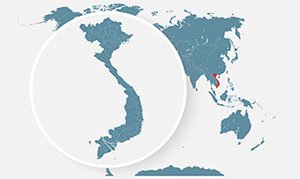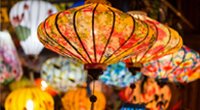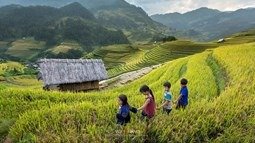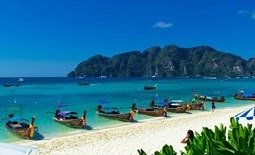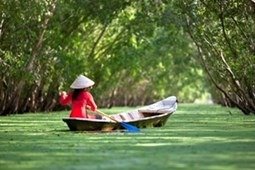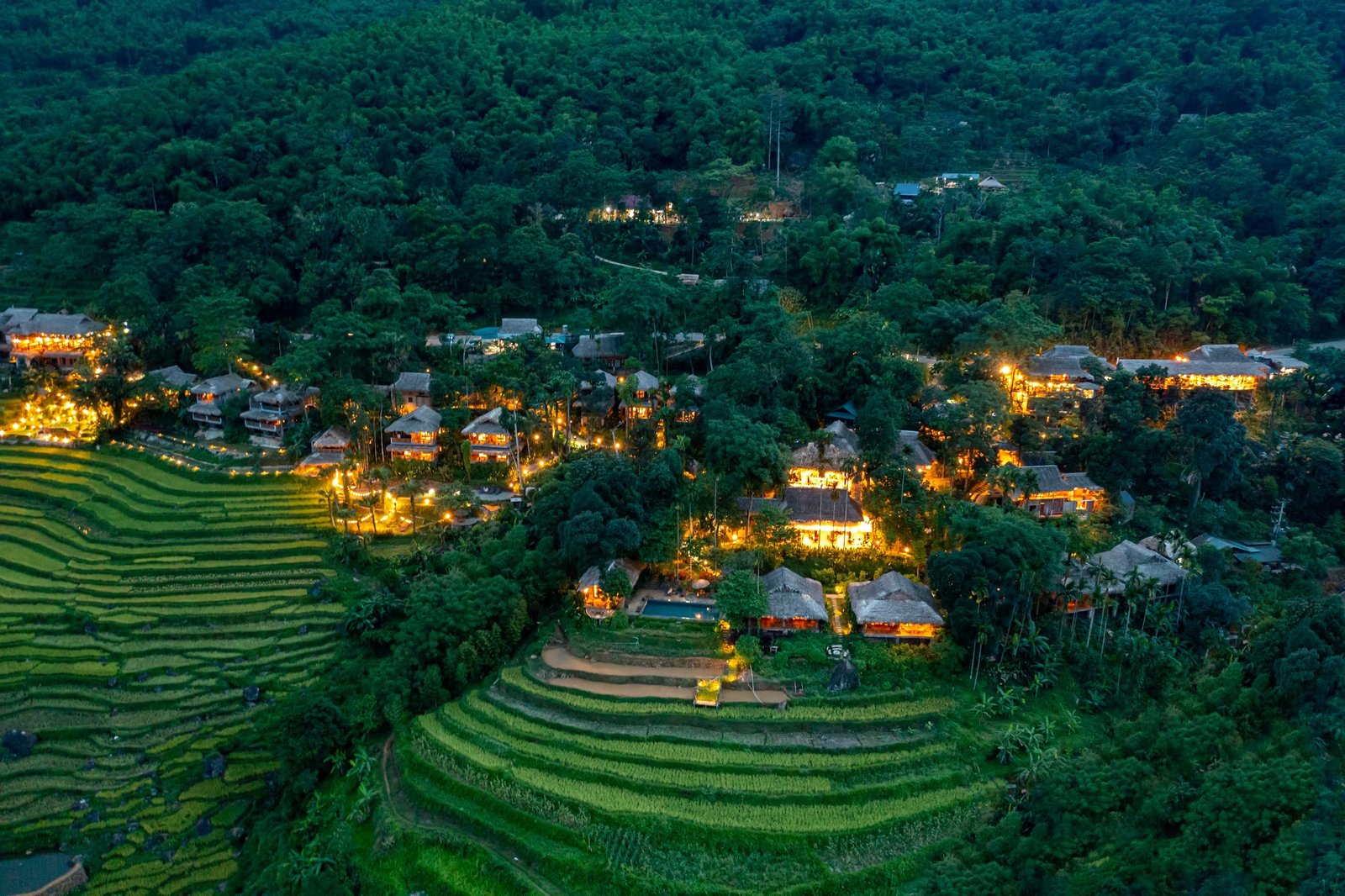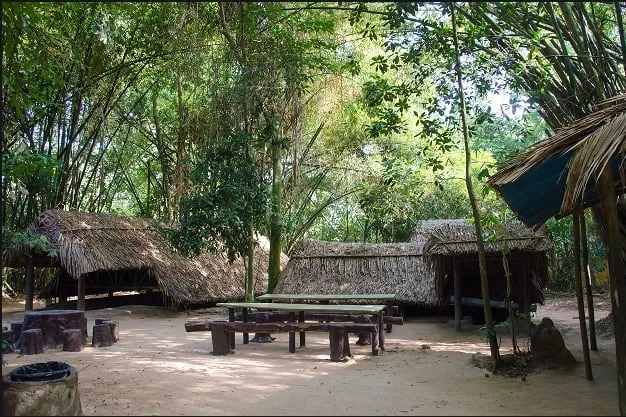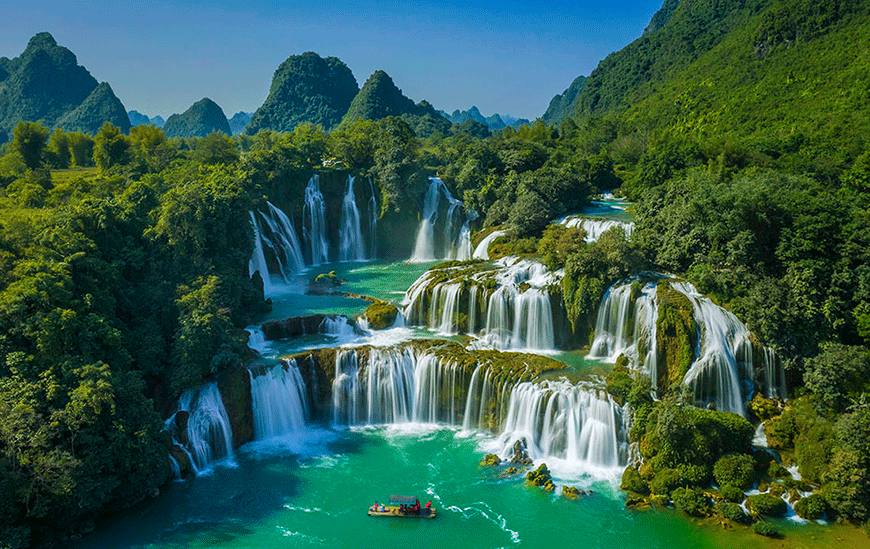Contents
ToggleLocation & Accessibility
Sapa is located in the far northwest of Vietnam, close to the Chinese border in Lao Cai Province. Getting there from Hanoi usually involves a 6-hour road journey or a combination of an overnight train to Lao Cai followed by a 1-hour bus or car ride up winding mountain roads. The route is scenic, with sweeping views of valleys, waterfalls, and terraced rice fields, but travel can be slow—especially in foggy or rainy conditions.
Pu Luong, by contrast, lies southwest of Hanoi, straddling the border of Thanh Hoa and Hoa Binh provinces. The drive is shorter—about 160 km and roughly 4 hours by car or bus—making it an ideal option for a weekend getaway or a quick escape from the city. The route is smoother, with fewer sharp mountain passes, though the last stretch into the nature reserve involves smaller rural roads.
💡 Travel Tip: If your schedule is tight, Pu Luong’s easier and shorter journey makes it more convenient. However, if you have the luxury of time, Sapa rewards the extra travel with a greater variety of landscapes, from towering peaks and alpine-style valleys to bustling ethnic markets and dramatic rice terraces.
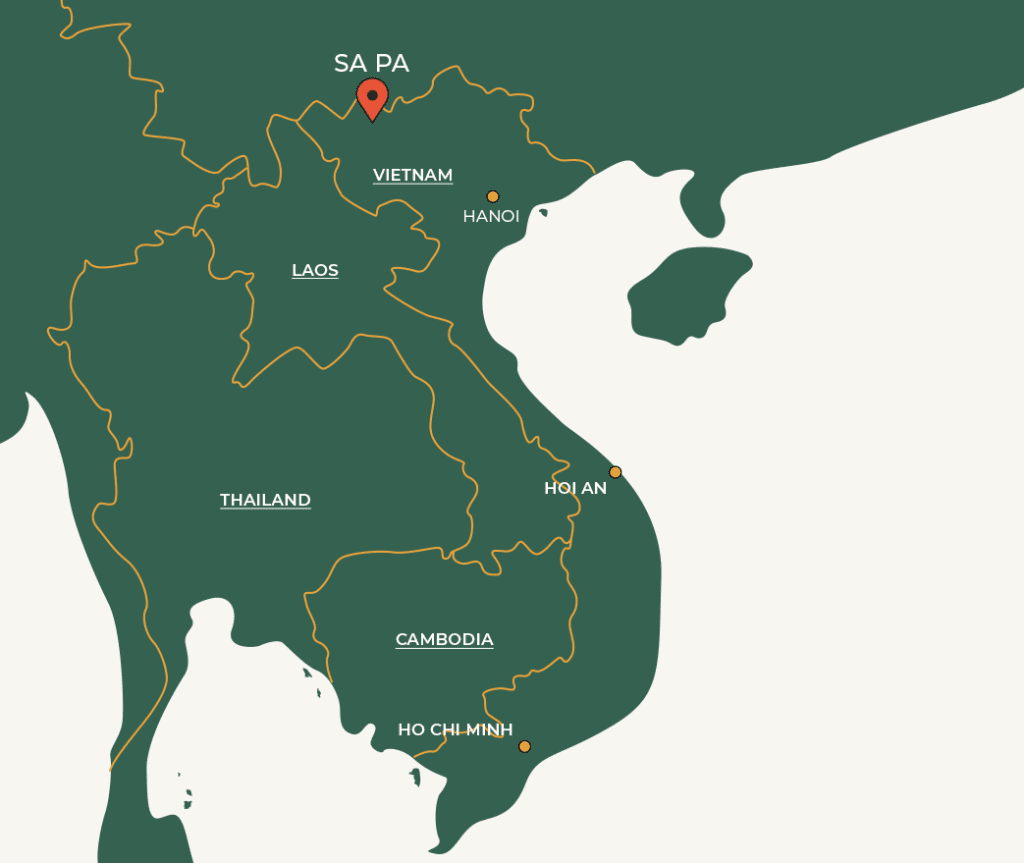
Landscapes & Activities
Sapa sits at a high altitude in the Hoang Lien Son mountain range, where jagged peaks rise dramatically above sweeping valleys of terraced rice fields. The air is cool year-round, often with mists curling through the hills, creating an almost dreamlike atmosphere. During the rice-growing season, the fields shimmer in shades of green and gold, while winter sometimes brings frost or even a dusting of snow.
Activities in Sapa cater to both adventure seekers and cultural explorers. You can trek for hours—or even days—through remote ethnic villages, cycle along winding mountain roads, visit vibrant highland markets like Bac Ha or Coc Ly, and soak in natural hot springs after a long hike. For a more relaxed thrill, take the Fansipan cable car to the “Roof of Indochina,” where panoramic views stretch across Vietnam and into China on a clear day.
Pu Luong, on the other hand, offers a gentler kind of beauty. Its lower-altitude landscapes are defined by rolling hills, lush valleys, bamboo forests, and peaceful rivers dotted with traditional waterwheels. Small waterfalls cascade into cool swimming holes, and rice paddies blanket the valley floor in soft waves of green.
The pace here is slower, with activities focused on relaxation and immersion in rural life. Nature walks meander through stilt-house villages, cycling trails wind past farms and streams, and evenings often end with a home-cooked meal shared with a local family. Pu Luong is less about adrenaline and more about serenity, making it perfect for travelers seeking peace, authenticity, and a deeper connection to Vietnam’s countryside.
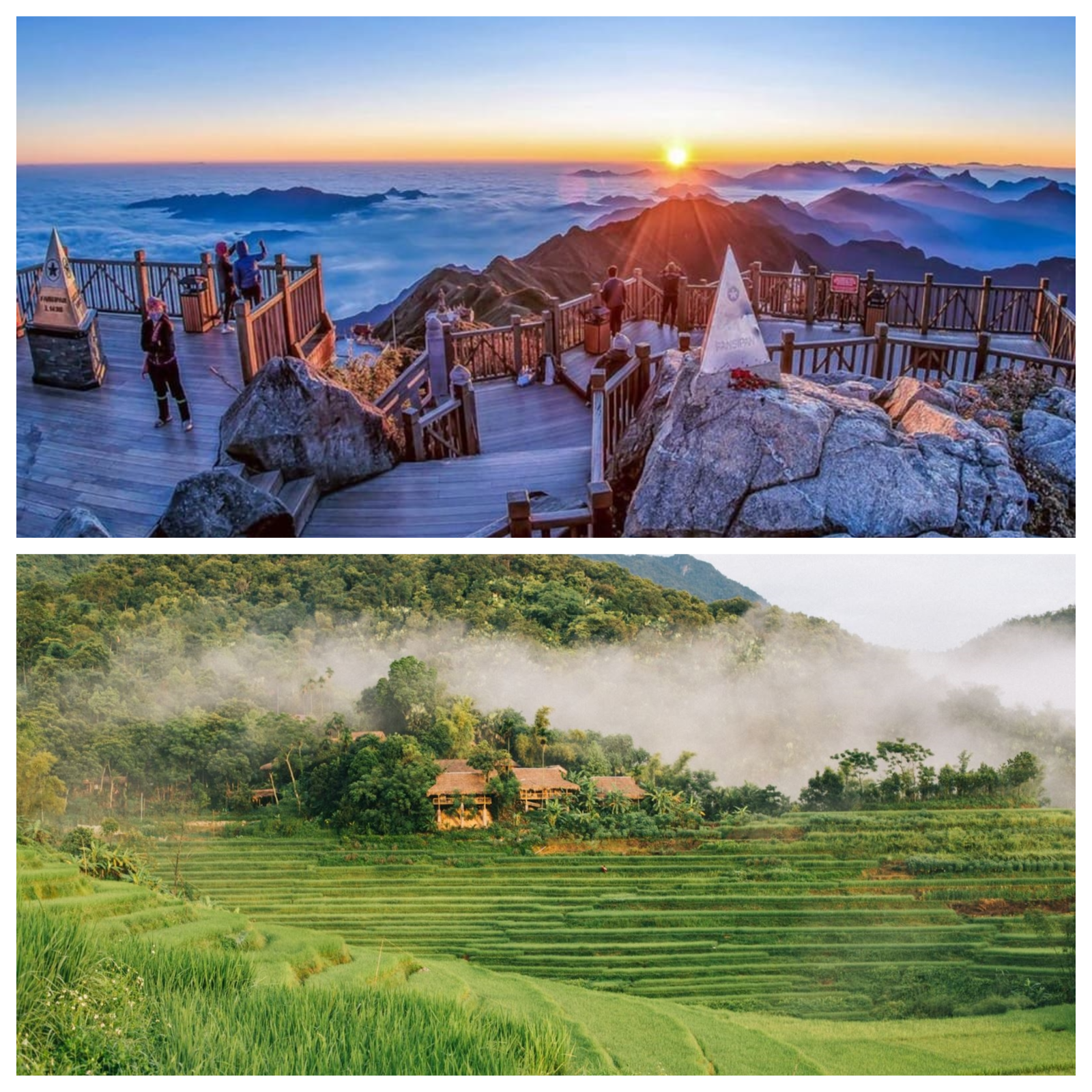
Tourist Crowds
Sapa has long been one of Vietnam’s most famous mountain destinations, so it naturally attracts larger numbers of both domestic and international visitors—especially during weekends and holiday seasons. The town center can feel busy, with bustling markets, restaurants, and hotels catering to a wide range of budgets. However, step outside the main tourist streets and venture deeper into the valleys, and you’ll still discover remote hamlets where daily life remains largely untouched by tourism. Treks to villages like Ta Van, Ban Ho, or Sin Chai can reveal quieter, more authentic sides of Sapa far from the crowds.
Pu Luong, by contrast, remains a hidden gem. With fewer visitors, the atmosphere is calm and unhurried, and it’s not unusual to spend hours on a trail without meeting another traveler. The limited number of homestays and small eco-lodges helps preserve the area’s serenity. Here, the soundtrack is not the chatter of tour groups but the rustle of bamboo leaves, the splash of a waterwheel, and the occasional crow of a rooster. For those craving peace and personal space, Pu Luong delivers it effortlessly.
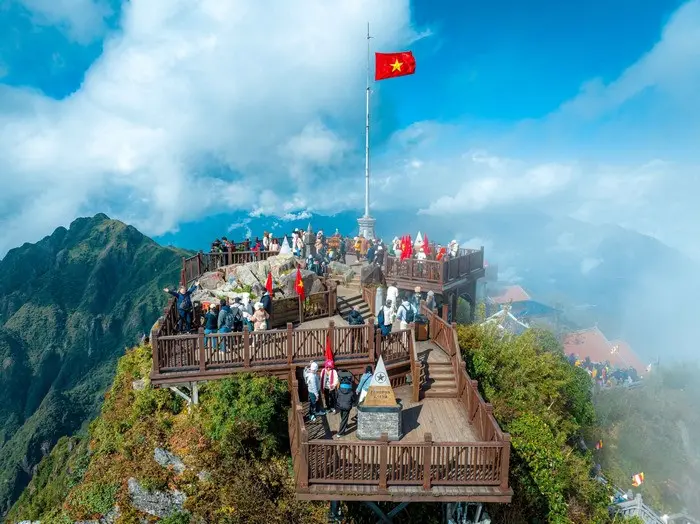
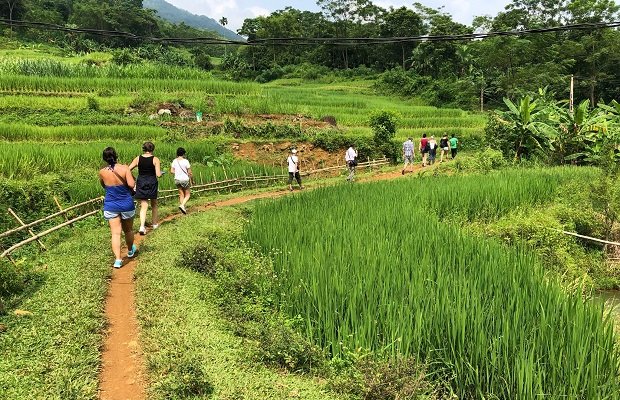
Best Time to Visit
Sapa
- Rice season (May–October): The fields transform with the seasons—lush green in summer, turning a rich golden yellow at the end of September to early October, when the harvest begins. This is peak beauty for photographers and nature lovers.
- Winter (December–February): Temperatures can drop below 0°C, with thick fog and occasional frost. While cold, the misty atmosphere adds a mystical charm to the mountains.
- Spring (March–May): Mild weather and blooming peach and plum blossoms make the valleys colorful. May also marks the start of rice planting, when water-filled terraces shimmer like mirrors.
- Summer (June–August): Warm and rainy, with vibrant green terraces and flowing waterfalls. The rain can be heavy, but it’s also when Sapa feels most alive with growth.
- Autumn (October–November): Crisp air, clear skies, and comfortable temperatures make trekking particularly enjoyable.
Pu Luong
- Two rice seasons:
- First season: February–May, with harvest in early June.
- Second season: June–October, with harvest in September.
- Best months: Late May–early June and September, when the terraces glow gold and the weather is pleasant.
- Winter (November–February): Cool mornings, sunny afternoons, and clear mountain views—perfect for relaxed hikes.
- Rainy season (July–August): The hills are a vibrant green, rivers swell, and waterfalls are more impressive, though brief showers are common.
💡 Tip: For both destinations, visiting during harvest season offers the most stunning landscapes, but each season brings its own charm—choose based on whether you prefer golden fields, green growth, or misty mystery.
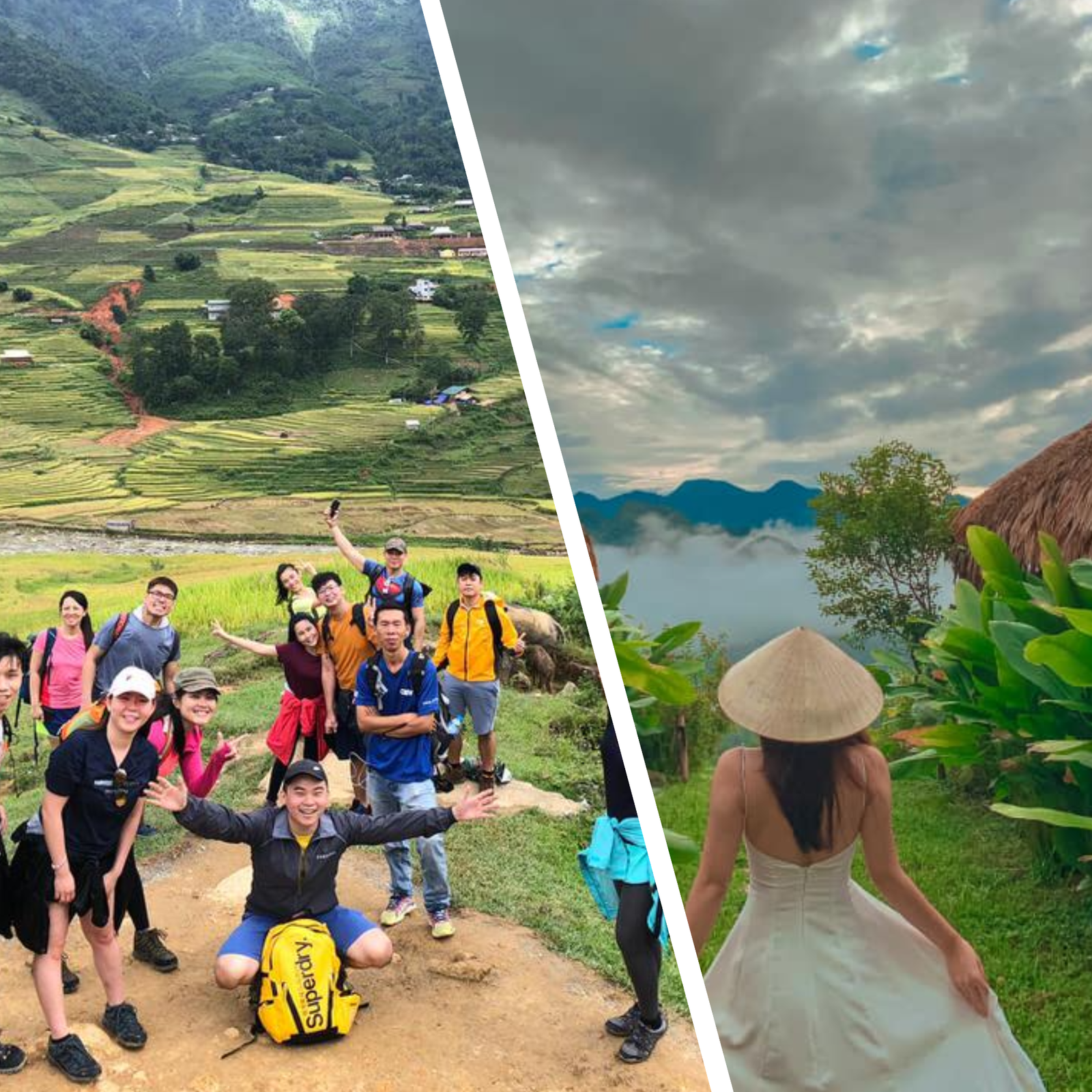
How Many Days to Spend
Sapa
Because Sapa is about six hours from Hanoi, it’s worth staying at least three days to make the journey worthwhile. This allows time for a full day of trekking through terraced rice fields, a visit to ethnic minority villages, and perhaps a ride on the Fansipan cable car. If you have four to five days, you can slow the pace and add side trips—such as the vibrant Bac Ha Market or a scenic loop through the Ha Giang mountains—without feeling rushed.
Pu Luong
With its shorter travel time (around four hours from Hanoi), two to three days is enough to explore Pu Luong’s main attractions. This includes hiking through rice terraces, visiting waterwheels, cooling off at small waterfalls, and enjoying peaceful evenings in a stilt-house homestay. Many travelers pair Pu Luong with nearby Ninh Binh or Mai Chau for a longer countryside escape.
💡 Tip: If your goal is variety and adventure, allocate more days to Sapa. If you’re looking for a short, restful break in nature, Pu Luong fits perfectly into a weekend trip.
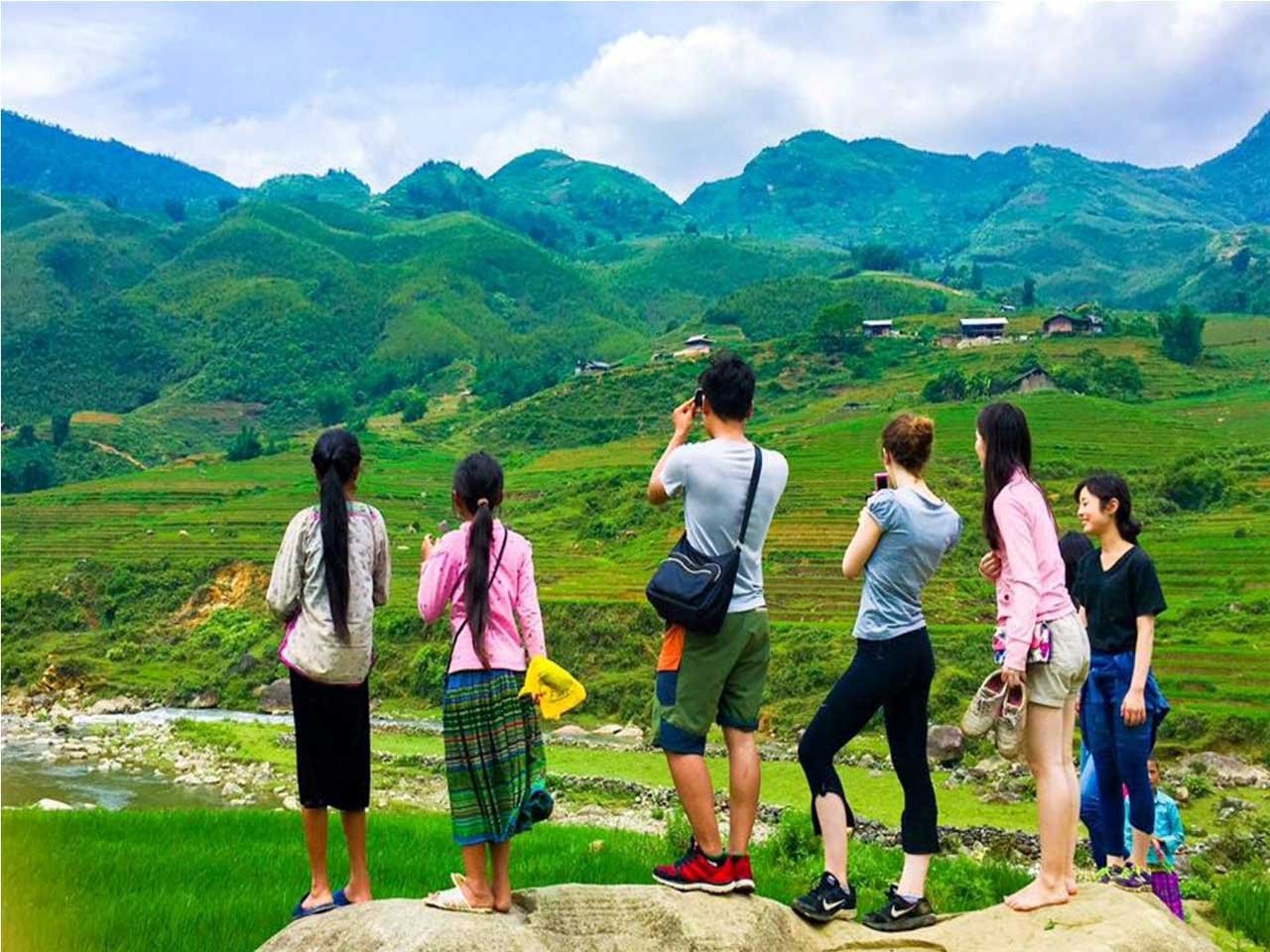
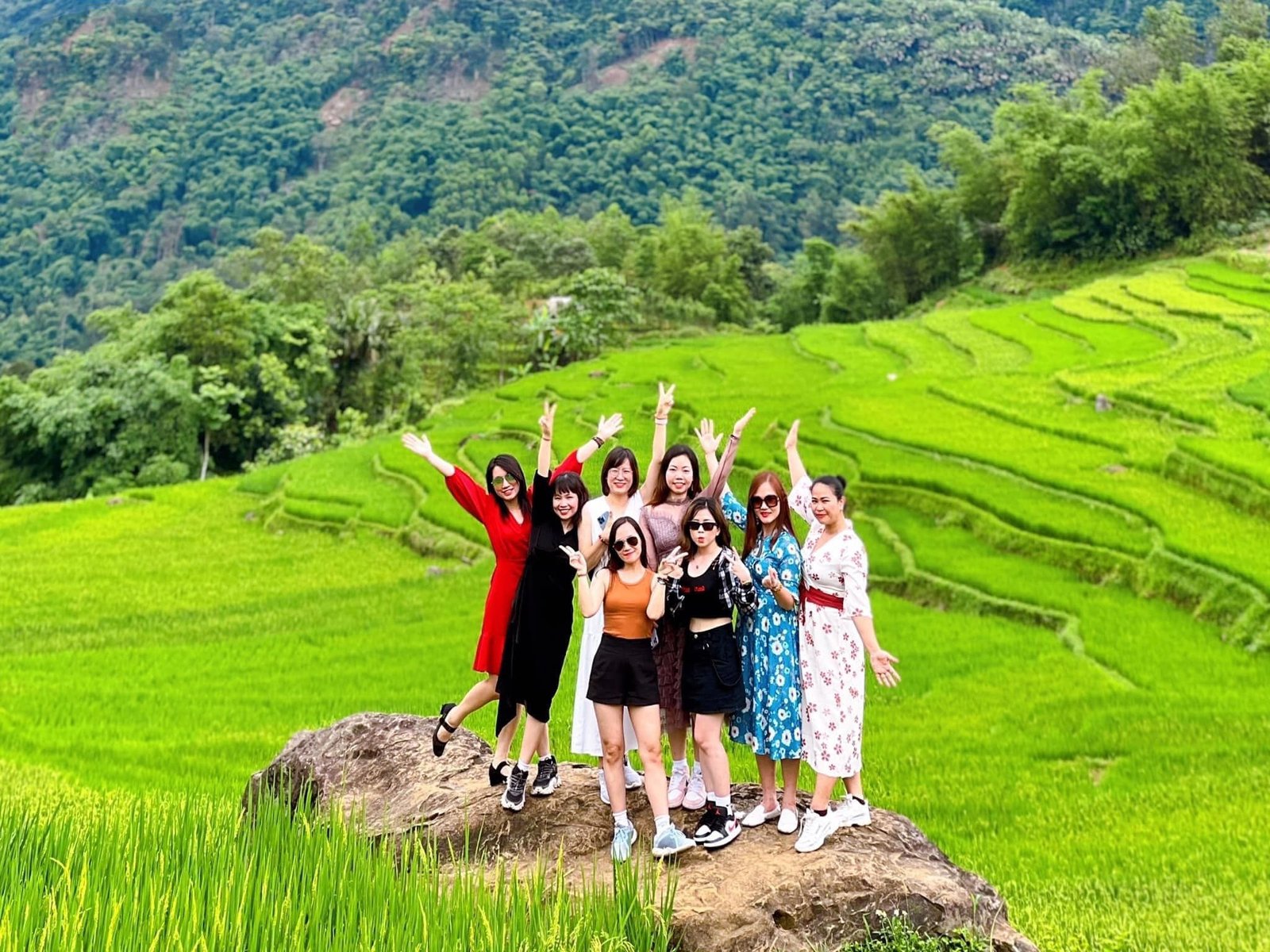
Infrastructure & Comfort
Sapa
Sapa is well-developed for tourism, offering a broad range of accommodation options—from budget hostels and mid-range hotels to luxurious mountain resorts with infinity pools overlooking the rice terraces. The town has countless restaurants serving both Vietnamese and international cuisine, plus easy access to tour operators, transport services, and shops. This makes it convenient for travelers who like variety and comfort, though it also means dealing with more crowds, traffic, and a busier atmosphere.
Pu Luong
Pu Luong’s infrastructure is simpler but full of charm. You’ll mostly find eco-lodges, stilt-house homestays, and small guesthouses nestled among rice fields and hillsides. These stays often offer home-cooked meals and immersive local experiences, though facilities may be more basic compared to Sapa. Transport options are limited, so most visitors rely on pre-arranged transfers or local guides. The payoff is a tranquil, rustic escape—perfect if you’re seeking peace over convenience.
💡 Tip: Choose Sapa if you value accessibility, dining variety, and comfort; choose Pu Luong if you want a slower pace and an intimate connection with nature.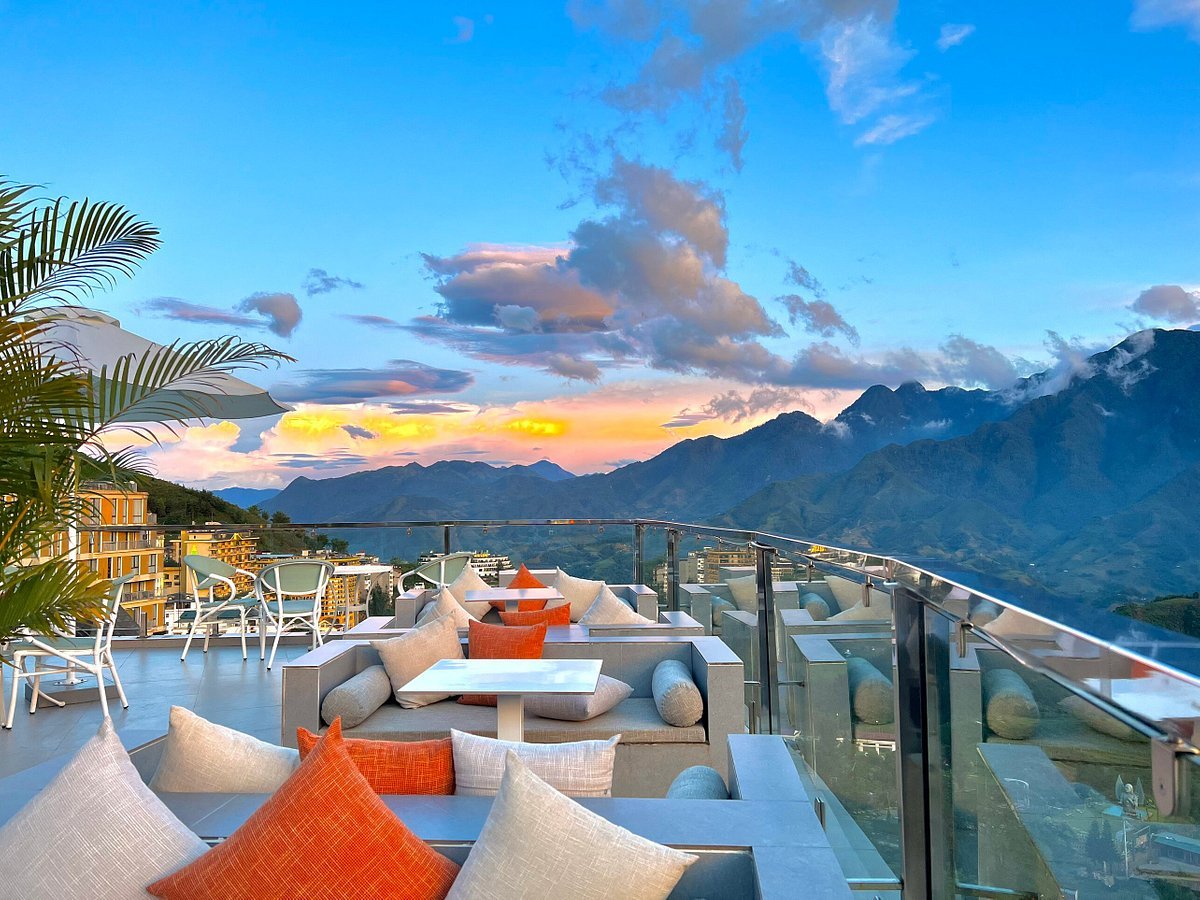
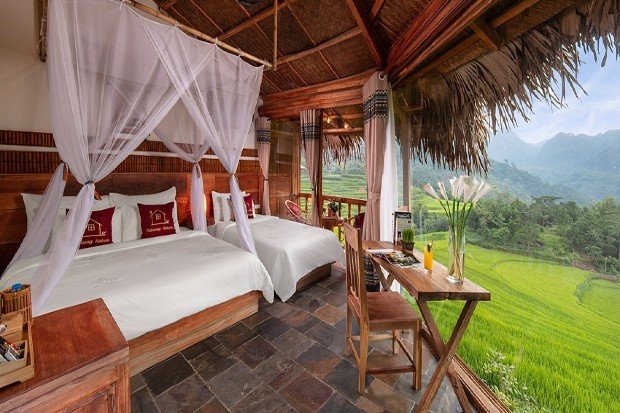
Conclusion – Which One Should You Choose?
Both Sapa and Pu Luong offer breathtaking scenery, unique cultural experiences, and a chance to step away from Vietnam’s bustling cities—but they cater to slightly different travel styles and priorities.
April–November: You can’t go wrong with either destination during these months. Sapa shines in late September to early October when the terraced rice fields turn a glowing golden yellow at harvest time. Pu Luong is equally beautiful in its two harvest periods—late May to early June and September—but generally stays warmer and less foggy.
December–March: Sapa can get very cold, with temperatures sometimes dropping below 0°C and fog hiding the views. If you want milder weather and clearer skies, Pu Luong is the more comfortable choice during this period.
Quick Decision Guide
- Want dramatic mountain views and iconic rice terraces? → Sapa
- Prefer a peaceful countryside escape with fewer tourists? → Pu Luong
- Short on time but still want a memorable nature getaway? → Pu Luong
- Interested in ethnic markets, cultural diversity, and a variety of treks? → Sapa
💡 Final Tip: If you have enough days, consider combining both—spend a few days in Pu Luong to relax, then head to Sapa for its mountain grandeur.

